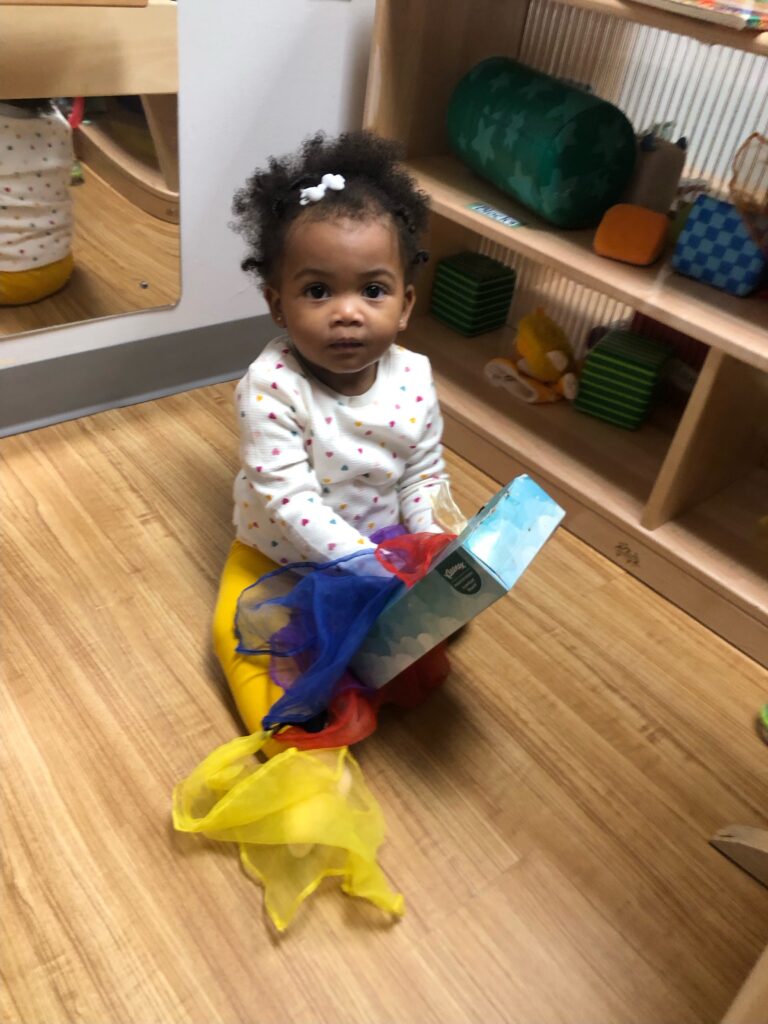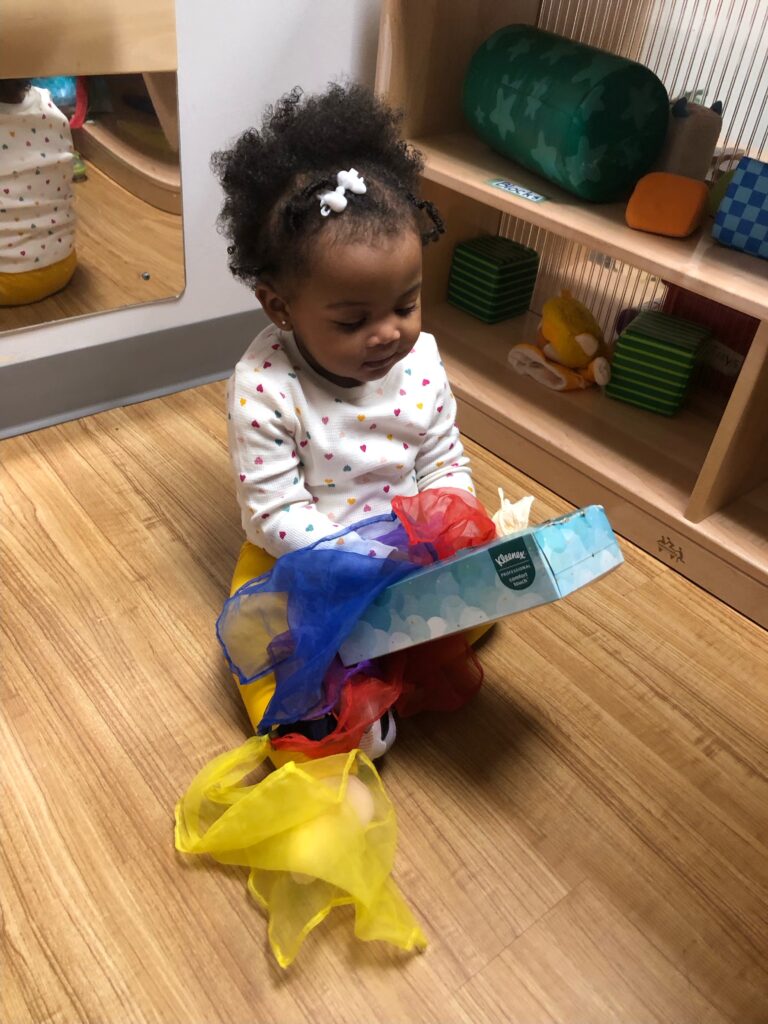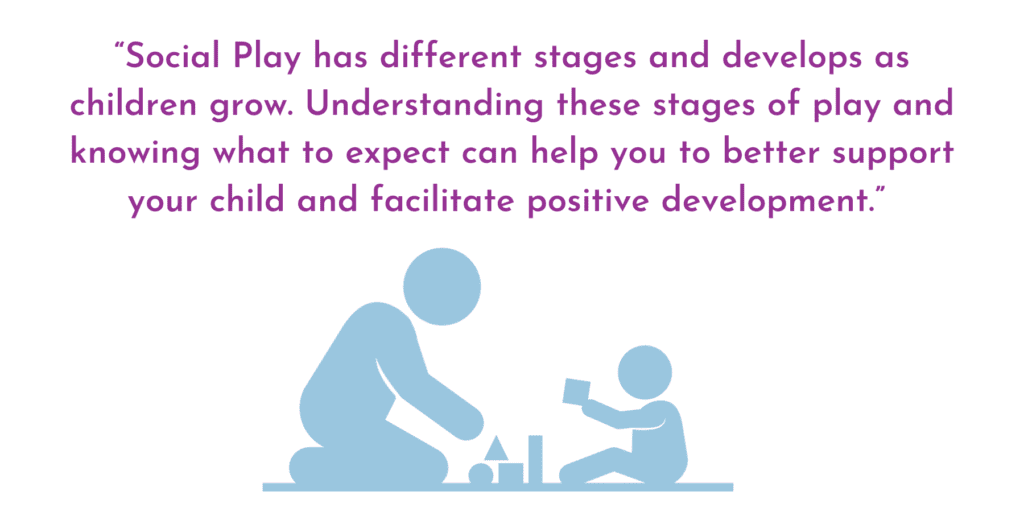The Science of Play is important to us at Play & Learn; we value what play means for children and their development. There are many different types of play that children use to explore their world and develop skills. Today we are going to discuss Social Play!
Here are some pictures of how one of our teachers decided to support an infant’s solitary play! Our teacher noticed that one of her children wanted to pull tissues out of the box as she explored her world. Our teacher decided to follow the child’s lead and support the play by tying some scarves together for her to pull in and out of the tissue box and, as you can see, it was a win-win! Tissues are no longer being wasted and making a big mess in the classroom AND the child can joyfully explore her play scheme to figure out how things work in her world!


Social Play has different stages and develops as children grow. Understanding these stages of play and knowing what to expect can help you to better support your child and facilitate positive development.
The first stage in Social Play is called Solitary Play, which begins as an infant and continues throughout preschool. This type of play occurs when children play alone, without interacting with other children or caregivers. Examples of this include an infant mouthing on a teething toy or a preschooler engaging in pretend play by themselves in a play kitchen area.
The next stage in Social Play is referred to as Onlooker Play. This begins when a child is in their infant and toddler years and continues throughout preschool years. Onlooker Play is when a child watches others play, and may make comments, but does not join in on the activity.

Parallel Play begins in toddler years and continues throughout preschool years. This is when children play near each other in similar ways, but they don’t play together. An example of this would be two children racing cars next to each other but not racing with each other.
Associative Play is the next Social Play stage that beings and continues within the preschool years. Associative Play happens when two or more children play with similar toys but it’s not a coordinated activity. Children may share and talk to each other during Associative Play.
Cooperative Play is the last stage that occurs in Social Play development. It begins in the late preschool years and continues with support from adults. Cooperative Play is when two or more children play together with the same toys and have a common goal. Sometimes in Cooperative Play, children also have assigned roles.
This is a short summary of the development of Social Play. If you would like to learn more about these stages and how you can support your child’s development, click here! Stay tuned for next month’s article on more about The Science of Play.








